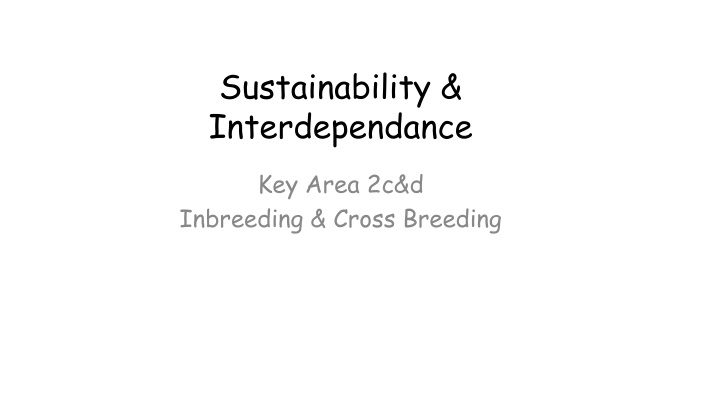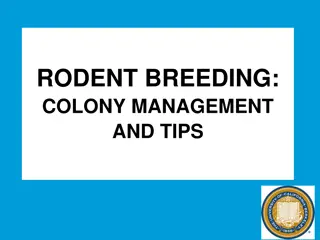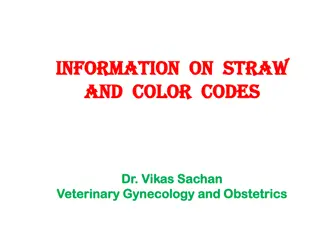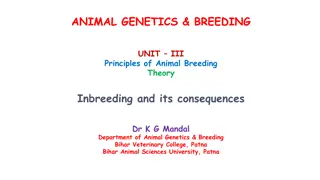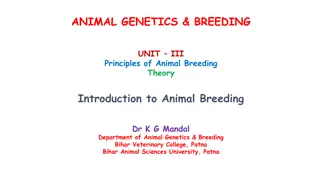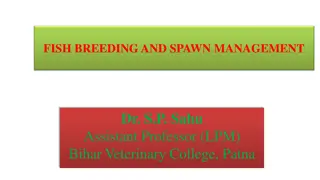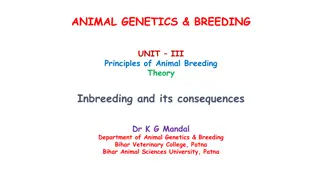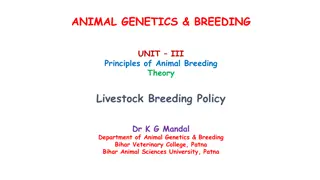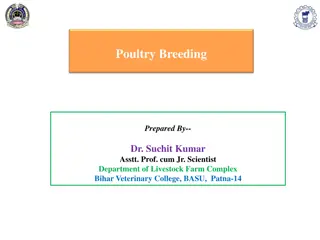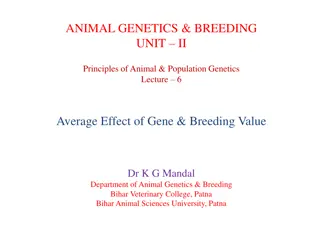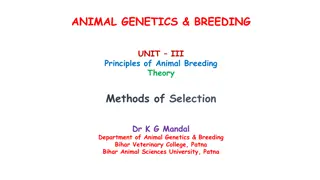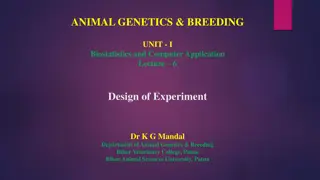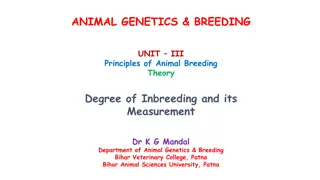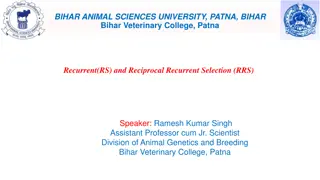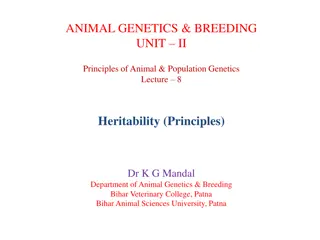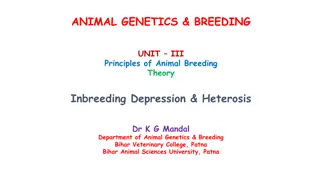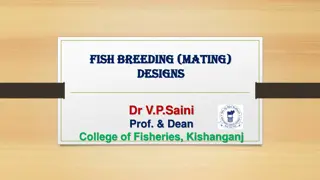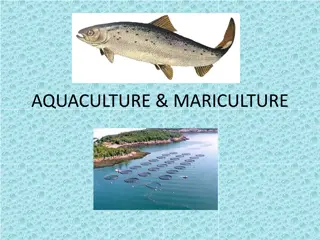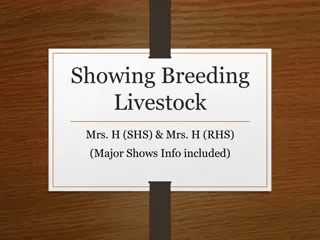Inbreeding and Cross Breeding Effects
Inbreeding involves the fusion of gametes from closely related plants or animals, leading to the loss of heterozygous alleles. While it can ensure desired traits over generations, inbreeding can also result in loss of genetic diversity and inbreeding depression. Cross breeding, on the other hand, involving the crossing of different inbred lines, produces F1 hybrids with increased vigor and yield. It is essential to understand the impact of inbreeding and cross breeding on genetic diversity and long-term breeding outcomes.
Download Presentation

Please find below an Image/Link to download the presentation.
The content on the website is provided AS IS for your information and personal use only. It may not be sold, licensed, or shared on other websites without obtaining consent from the author.If you encounter any issues during the download, it is possible that the publisher has removed the file from their server.
You are allowed to download the files provided on this website for personal or commercial use, subject to the condition that they are used lawfully. All files are the property of their respective owners.
The content on the website is provided AS IS for your information and personal use only. It may not be sold, licensed, or shared on other websites without obtaining consent from the author.
E N D
Presentation Transcript
Sustainability & Interdependance Key Area 2c&d Inbreeding & Cross Breeding
Learning Intentions By the end of this topic you should be able to: State that in artificial selection, plants and animals are in-bred over several generations. State that inbreeding results in elimination of heterozygotes. State that inbreeding depression is the accumulation of recessive, deleterious homozygous alleles. State that in large populations, many deleterious genes can be carried but few will be expressed. State that hybrids are the offspring of parents that are different in genetically determined traits. State that F2 populations may have a wide variety of genotypes. Describe how the crossing of two different inbred lines produces F1 hybrids that are relatively uniform and heterozygous. State that F1 hybrids have an increased vigour and yield. Explain that the F2 generation will be too diverse genetically and subsequently of little use for further production.
Inbreeding Inbreeding involves the fusion of two gametes from close relatives and can lead to the loss of heterozygous alleles Selected plants or animals that are related are bred for several generations. This continues until the populations breed true to the desired type. This happens because it eliminates heterozygosity
Effects of inbreeding Inbreeding ensures: offspring receive the desired alleles eventually a homozygous stock will form true breed will occur over many generations But inbreeding can also lead to: Loss of heterozygosity Inbreeding depression
Loss of heterozygosity Heterozgosity 100% Aa (selfed) P F1 AA Aa Aa aa 50% F2 25% AA AA AA AA AA Aa Aa aa aa aa aa aa AA Aa Aa aa F3 12.5% 4AA 4AA 4AA 4AA 4AA AA AA 4aa 4AA AA AA 4aa 4aa 4aa 4aa 4aa 2Aa 2Aa 2Aa 2Aa aa aa aa aa
Inbreeding Depression This will lead to an accumulation of recessive, deleterioushomozygous alleles. The effect of this is that there could be a decline in vigour, size, fertility, yield . It will also lead to a loss of heterozygous alleles which mask deleterious allele These individuals will do less well at surviving to reproduce which results in inbreeding depression
The Vadoma tribe of Zimbabwe have Ectrodactyly (two toed feet). This mutation is more common due to inbreeding.
Cross breeding Introducing new alleles into a population can be achieved by crossbreeding (different breeds in animals, or different cultivars in plants) Individuals from different breeds produce F1 which are cross bred to produce offspring with improved characteristics LABRADOODLE PUGGLE
Hybrids An F1 hybrid is an individual resulting from a cross between two genetically dissimilar parents. Breeders will cross members of one variety of a species that have a desired characteristic with members of another variety (of the same species) that have another desired characteristic in the attempt to produce a hybrid that has both desirable characteristics.
Racehorse breeder 1. strong stallion 2. fastmare
domestic cat breeds 131 Domestic Cat Breeds Download Small Serval wallpaper Example Savannah cats Savannah Cat portrait.jpg Produced by breeding a serval with a domestic cat
Domestic cat Wild Serval cat X F1 hybrid Looks like serval, retains some wild character Domestic cat X F2Ryan0402 F2 hybrid Looks like serval, milder temprement
Hybrid vigour Hybridisation(mating) of two different inbred homozygous cultivars of plant species produces offspring who are uniformly heterozygous. aabbCCDD X AABBccdd Parents A High vigour B Disease resistant C Strength D Drought resistant All ABcd gametes All abCD F1 AaBbCcDd
Hybrid vigour The F1 has advantages over the P generation in that it will have increased vigour and yield. Plants with increased vigour may also have incresead disease resistanceor increased growth rate However, if the F1 are crossed with each other then the F2 generation is genetically variable & of little use.
Maintaining F1 Cross Breed To maintain the desirable F1 (with hybrid vigour ) we can use selection Two original parents are maintained to produce the F1 hybrid breed.
